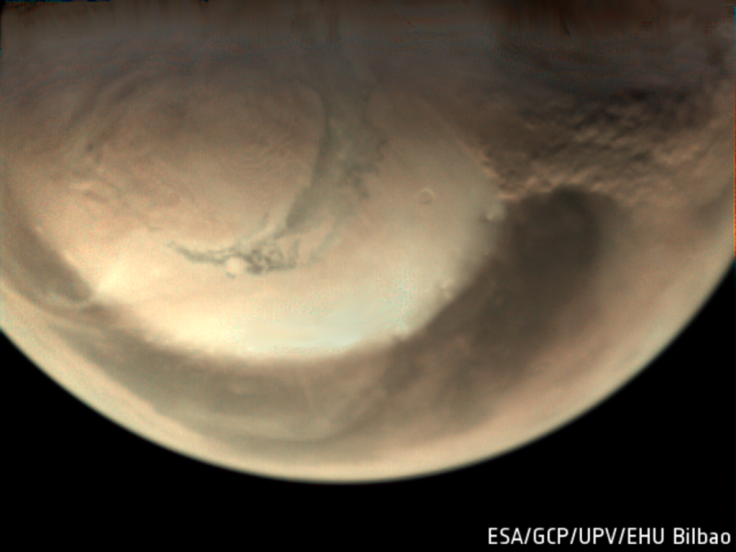Stunning Mars Images Show Dust Storms Raging On Red Planet [PHOTOS]

New Mars images obtained by the European Space Agency's (ESA) Mars Express Orbiter captured the storms raging on the Red Planet.
Mars' northern hemisphere has apparently entered spring season, and this means local and regional dust storms have been swirling on the Red Planet over the past several weeks. ESA officials wrote in a statement accompanying the new Mars images that the storms only last "a few days or weeks and confined to a small area" until they "disperse towards the equator."
"It is currently spring in the northern hemisphere of Mars, and water-ice clouds and small dust-lifting events are frequently observed along the edge of the seasonally retreating ice cap," the statement read.
Between May 22 and June 10, the Mars Express Orbiter captured at least eight storms brewing along the edge of Mars' ice cap. However, unlike the global storm that covered the entirety of the Red Planet for months last year, these storms formed and disappeared within just one to three days.
One image obtained by the Mars Express' High Resolution Stereo Camera (HRSC) and the Visual Monitoring Camera (VMC) on May 26 showed a "spiral-shaped" dust storm which stood out against the white ice cap due to its brown color.
The Mars Express captured another storm on May 29, which started brewing on May 28 but dispersed on June 1. Other images showed regional storms moving from the ice cap toward the huge volcanoes Olympus Mons and Elysium Mons.
According to ESA officials, observations made by the orbiter showed that when the storms reached the volcanoes, clouds in the area "that had previously been developing started to evaporate as a result of the air mass being heated by the influx of dust."
ESA's Mars Express began orbiting Mars in December 2003, just a few weeks before NASA's Opportunity and Spirit rovers arrived at the Red Planet. To see more images taken by the orbiter, check them out here.
Meanwhile, NASA's Curiosity rover made a shocking discovery last month, finding the presence of methane on Mars. While exploring the Gale Crater, the lander reportedly detected methane levels around 21 parts per billion per unit volume (ppbv) of methane gas, which is considered to be an indication of life.
However, NASA also explained that the surge of methane may not have been produced by life forms, whether "ancient or modern," since the gas can also be produced by hot water reacting with certain types of rock.
© Copyright IBTimes 2024. All rights reserved.





















